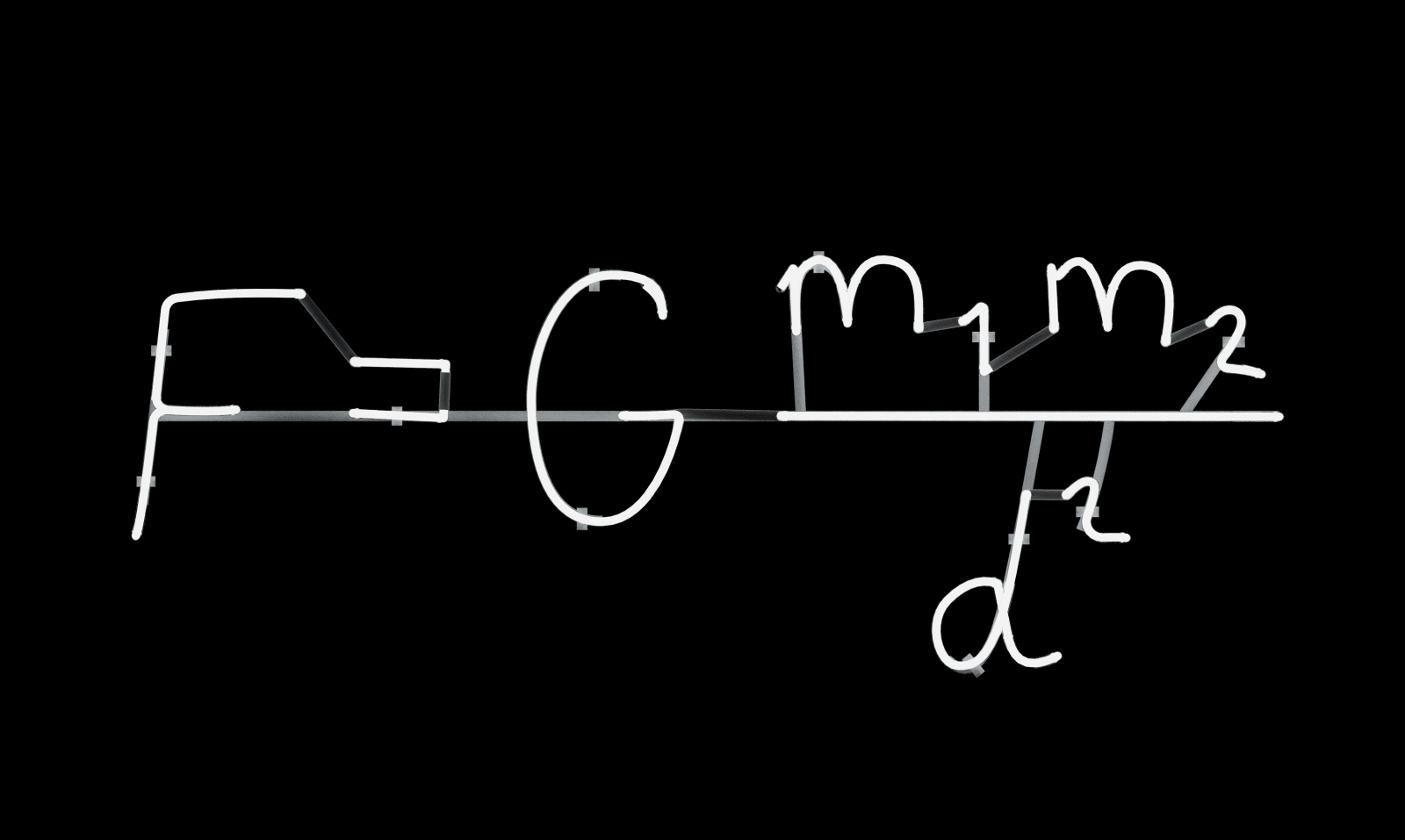Andrea Galvani Italy, b. 1973
Newton's Gravity, 2019
6500K neon, white blown glass, metal structure
31.7 x 88 x 7 cm
Edition of 3
Based on the groundbreaking theory of gravitation formulated by Isaac Newton in 1687, Newton’s Gravity by Andrea Galvani synthesizes thousands of years of astronomical observations and theories in one neon...
Based on the groundbreaking theory of gravitation formulated by Isaac Newton in 1687, Newton’s Gravity by Andrea Galvani synthesizes thousands of years of astronomical observations and theories in one neon sculpture. It demonstrates the power of mathematics to find hidden patterns in nature, and to reveal precise simplicities behind the complexities of the Universe.
Newton famously stated, “If I have seen a little further it is by standing on the shoulders of giants.” To formulate his theory of gravity, Newton looked to the laws of planetary motion introduced by Johannes Kepler. Applying integral calculus, Newton discovered an inverse square relation between force and distance. In this equation, F is the attractive force, d is the distance, m is the mass of the two objects, and G is the gravitational constant. Newton’s revelation was profound. His calculations provided mathematical proof that the same force acts upon terrestrial and celestial objects—gravity is universal. Although his theory was eventually superseded by Albert Einstein’s (1879-1955) general relativity, Newton’s equations for gravity are so effective, they are still used today to send satellites and rocket ships to space.
Newton famously stated, “If I have seen a little further it is by standing on the shoulders of giants.” To formulate his theory of gravity, Newton looked to the laws of planetary motion introduced by Johannes Kepler. Applying integral calculus, Newton discovered an inverse square relation between force and distance. In this equation, F is the attractive force, d is the distance, m is the mass of the two objects, and G is the gravitational constant. Newton’s revelation was profound. His calculations provided mathematical proof that the same force acts upon terrestrial and celestial objects—gravity is universal. Although his theory was eventually superseded by Albert Einstein’s (1879-1955) general relativity, Newton’s equations for gravity are so effective, they are still used today to send satellites and rocket ships to space.
